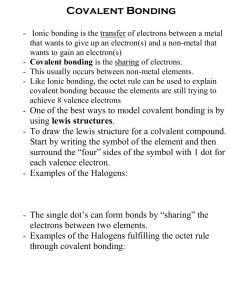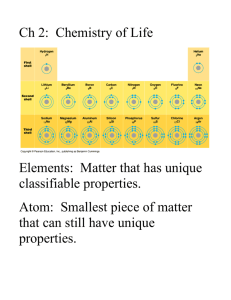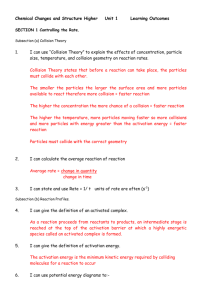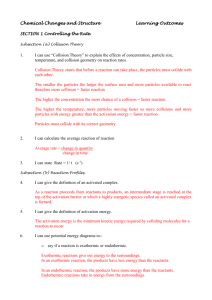Covalent Bonding Worksheet
advertisement
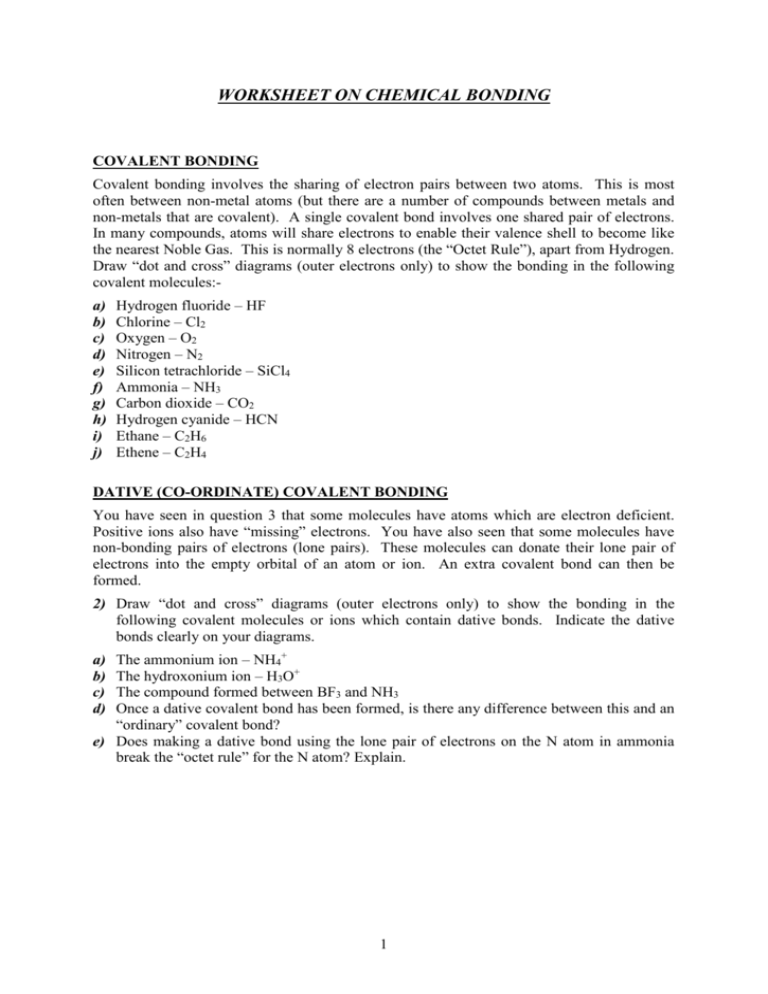
WORKSHEET ON CHEMICAL BONDING COVALENT BONDING Covalent bonding involves the sharing of electron pairs between two atoms. This is most often between non-metal atoms (but there are a number of compounds between metals and non-metals that are covalent). A single covalent bond involves one shared pair of electrons. In many compounds, atoms will share electrons to enable their valence shell to become like the nearest Noble Gas. This is normally 8 electrons (the “Octet Rule”), apart from Hydrogen. Draw “dot and cross” diagrams (outer electrons only) to show the bonding in the following covalent molecules:a) b) c) d) e) f) g) h) i) j) Hydrogen fluoride – HF Chlorine – Cl2 Oxygen – O2 Nitrogen – N2 Silicon tetrachloride – SiCl4 Ammonia – NH3 Carbon dioxide – CO2 Hydrogen cyanide – HCN Ethane – C2H6 Ethene – C2H4 DATIVE (CO-ORDINATE) COVALENT BONDING You have seen in question 3 that some molecules have atoms which are electron deficient. Positive ions also have “missing” electrons. You have also seen that some molecules have non-bonding pairs of electrons (lone pairs). These molecules can donate their lone pair of electrons into the empty orbital of an atom or ion. An extra covalent bond can then be formed. 2) Draw “dot and cross” diagrams (outer electrons only) to show the bonding in the following covalent molecules or ions which contain dative bonds. Indicate the dative bonds clearly on your diagrams. The ammonium ion – NH4+ The hydroxonium ion – H3O+ The compound formed between BF3 and NH3 Once a dative covalent bond has been formed, is there any difference between this and an “ordinary” covalent bond? e) Does making a dative bond using the lone pair of electrons on the N atom in ammonia break the “octet rule” for the N atom? Explain. a) b) c) d) 1





